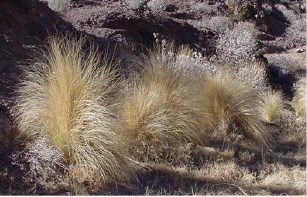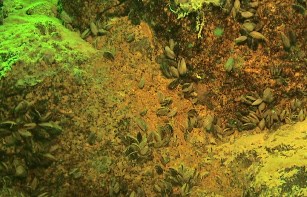
Photo Credit: Andrew Cattoir Lake Mead Invasive SpeciesThe National Parks including Lake Mead National Recreation Area are home to complex native communities of plants and animals that have developed over millions of years. This natural heritage is threatened by the invasion of exotic plants and animals. 
Invasive Plant ManagementInvasive Plant Management Teams (IPMT) are a weapon to combat invasive plants. The teams were modeled after the coordinated rapid response approach used in wild land fire fighting. The first test of the IPMT concept (formerly called the Exotic Plant Management Team) was made in 1996 at Lake Mead National Recreation Area. The success of the IPMT derives from its ability to adapt to local conditions and needs, using weed science expertise and partnerships.More about invasive plant management 
FountaingrassLake Mead National Recreation Area's Resource Management Division eradicates fountaingrass (Pennisetum setaceum) from its shorelines. Removal methods include digging the plant out of the ground with hand tools or applying an aquatically approved EPA registered herbicide. Fountaingrass has been added to the Nevada State Noxious Weed List because of its ability to invade natural areas and displace native plant communities, increase wildfire danger, and impact desert tortoise habitat.More about Fountaingrass 
Quagga MusselsQuagga mussels have been found in lakes Mead and Mohave. Mud, plants and animals that may be lurking on your watercraft, trailer, equipment, or on your vehicle will cause the spread of invasive mussels. Invasive mussels cause millions of dollars of damage to boat and water systems by clogging pipes and engines. They also impact the native ecosystem and sport fisheries.More about Quagga mussels |
Last updated: December 15, 2022
